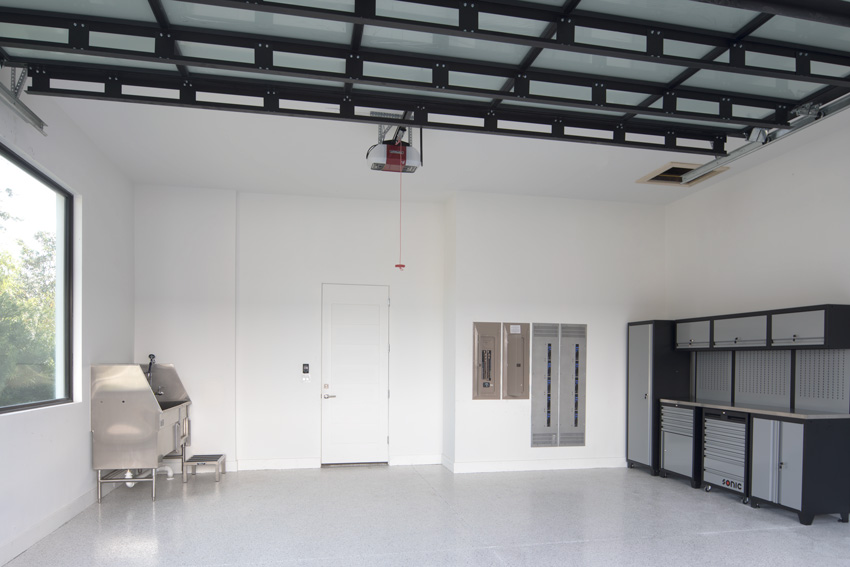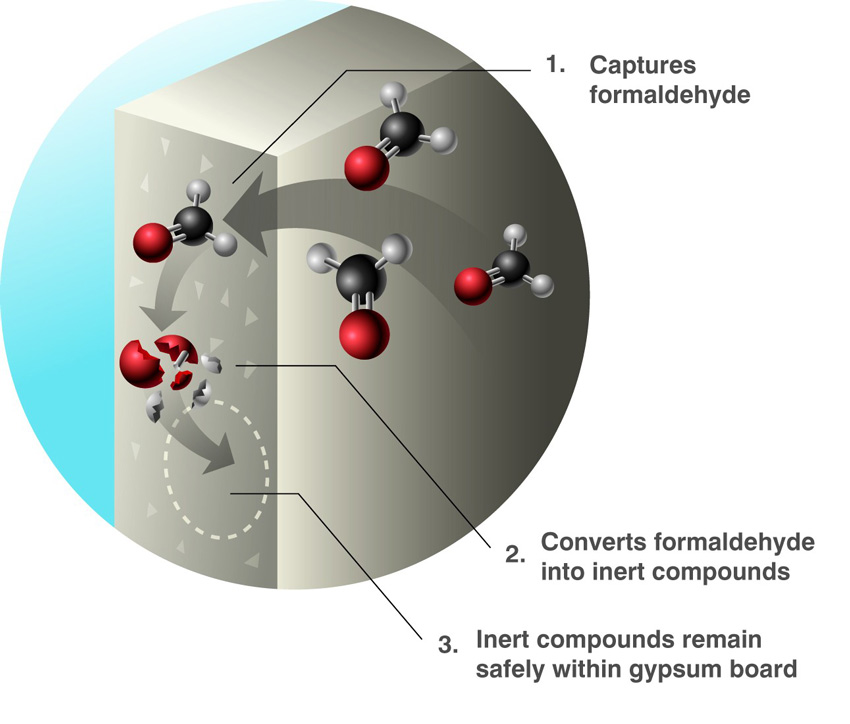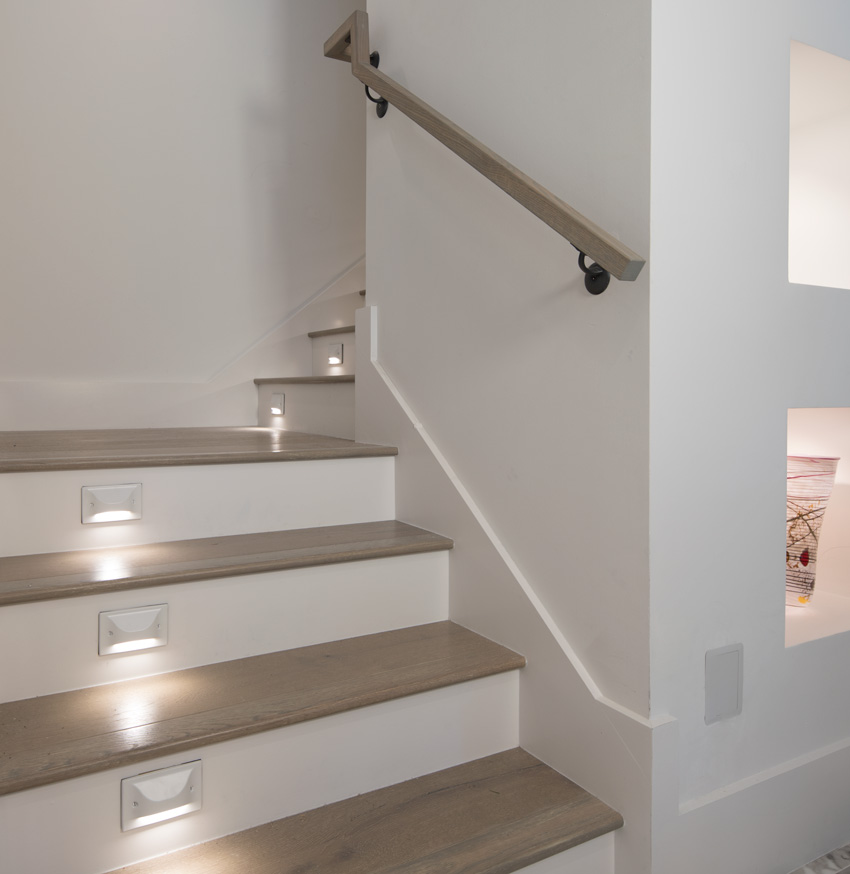Innovations in Residential Construction Using Advanced Gypsum Products
Gypsum Product Manufacturing
In order to understand some of the different attributes of standard and high-performance gypsum board, it is useful to understand how the products are manufactured. There are two fundamental ways to manufacturer gypsum products that are commonly in use in residential construction, discussed as follows.
Natural Gypsum
Prior to the 1980s, almost all of the gypsum used to manufacture boards and plaster was natural in that it was mined from the earth. As such, many manufacturing plants were logically located close to a significant source of natural gypsum that was mined and brought to the plant. Today, a large amount of gypsum is reclaimed from recycled products, allowing plants to be located in more places closer to centers of construction activity. Either way, the natural gypsum rock is crushed into a powder that is heated to about 350 degrees Fahrenheit in a process called calcining. The calcined gypsum is mixed with water and additives to form a slurry that is fed between continuous layers of paper on a board machine. The paper edges of the board are machine wrapped and the face and back paper become chemically and mechanically bonded to the gypsum core. As the board moves down a conveyer line, its calcium sulfate makeup recrystallizes, thus reverting back to its original rock state. The board is then cut to length and conveyed through dryers to remove any free moisture. The finished boards are stacked, labeled, and made ready for transport by rail or truck to distribution centers.

Both natural and synthetic gypsum boards are commonly used in North America with the same chemical makeup and same properties for construction and finished spaces in each.
Synthetic Gypsum
Since the 1990s, most new gypsum board plants have been built near power plants to take advantage of coal-fueled power, which can be used to produce “synthetic gypsum.” By using a process known as flue-gas desulfurization (FGD), power-generating or similar plants remove polluting sulfur dioxide (SO2) from their smoke stacks as a means to reduce harmful emissions into the atmosphere. By passing the sulfur dioxide through limestone in an air-pollution-control scrubber tower, a resulting scrubber sludge is formed. Adding some forced oxidation to the sludge turns it into hardened calcium sulfate—the same high-quality compound that forms natural gypsum. By using synthetic FGD gypsum in its manufacturing process, the gypsum industry contributes to a cleaner environment in at least two ways. First, it promotes the continued use of scrubber towers to keep the air clean. Second, it repurposes an otherwise useless material that would needlessly occupy dwindling landfill space. In fact, the U.S. gypsum industry has diverted almost 8 million tons a year of FGD gypsum to board manufacturing using material that otherwise would have been sent to local landfills.
It is important to point out that both natural and synthetic gypsum used in gypsum boards are considered to be nontoxic and safe and are often mixed together at a manufacturing plant. FGD gypsum used for gypsum wall board does not use fly ash or bottom ash in its makeup, nor does it use unsuitable or harmful elements or compounds. Rather, it must meet stringent quality-control standards to assure that it is in fact chemically similar to natural gypsum. Because of this safety plus its environmental benefits, both the EPA and the U.S. Green Building council use FGD gypsum in their office buildings. Currently, almost half of all of the gypsum used in the United States is synthetic FGD gypsum.
Regardless of the type of gypsum produced (natural, synthetic, or mixed) the paper facing used on gypsum boards is commonly made from 100 percent recycled paper. This helps further reduce the environmental impact of producing gypsum board.
Residential Gypsum Board and Panel Types
There are, as already noted, a variety of variations on the final products produced from gypsum. One of the basic differences is the way the gypsum cores are finished or covered. The most common is gypsum wallboard, which is used for walls and ceilings and has a paper facing on each side and along the edges. However, some products do not have paper and instead may use glass-mat facing or other treatments to provide a final surface. These are referred to as gypsum panels instead of gypsum board and have a bit more texture in the surface compared to paper. These board and panel designations are true regardless of the thickness (which can range from 1/4 inch up to 1 inch) or the size (48 or 54 inches wide by 10, 12, or 14 feet long). The commonality is the gypsum core of these various products.
With the above in mind, we will look at some of the standard and high-performance products that are available.
Standard Gypsum Boards
There are essentially two types of standard, commonly available gypsum board used in residential construction.
- Common residential gypsum board: This is the product that most people think of as gypsum board. It is defined by a standard gypsum core and paper facings and is typically ½ inch in thickness for general use. It is intended for single-layer interior applications in residential construction and non-fire-rated commercial construction or wherever the unique properties of other special board types are not required. It is also available in a ½-inch-thick lightweight version with the same properties as regular board but is typically about 25 percent lighter in weight.
- Fire-resistance-rated boards: Any product or system that claims to provide fire resistance to satisfy building code requirements must prove that claim through independent, third-party testing based on accepted industry standards. In this case, the standard is ASTM C1396/C1396M – 17: Standard Specification for Gypsum Board (formerly ASTM 36). To receive the “type X fire-resistance designation under this standard, a gypsum board assembly (i.e., gypsum board layers and studs) must be shown to achieve not less than a 1-hour fire resistance rating, which typically means that a 5/8 inch thickness of two layers over studs is required, plus attention to installation details. Type X gypsum board is also commonly made with noncombustible fiberglass fibers and other additives to improve its overall fire resistance and burning characteristics. Type X gypsum board is used in locations where increased fire resistance is desired or required by code, such as creating fire-resistance-rated separations between garages and occupied spaces or between living units and hallways in multifamily situations. Because of its enhanced makeup and thickness, it is usually harder to cut and work with than regular ½-inch drywall.

Type X gypsum board is used as part of fire-resistant-rated construction in places likes garages in residential construction.
Fire resistance can be improved to achieve higher ratings by using Type C gypsum board, which has an enhanced core with more glass fiber used than in type X. Type C also has an additive of a shrinkage-compensating vermiculite that makes up for material shrinkage during fires in order to provide additional protective stability. 5/8-inch-thick type C gypsum board is used where a fire-resistance rating of more than 1 hour is needed and is commonly used on assemblies that are tested to achieve a 2- to 4-hour fire-resistance rating.
High-Performance Gypsum Boards and Panels
Standard or fire-resistance rated gypsum boards form the basis of all high-performance boards and panels. Variations in the formulation of the gypsum core and/or the facings provide innovative products to meet the variety of needs that are discussed as follows.
- Moisture/mold/mildew-resistant gypsum boards: This type of gypsum board has been available for some time and has been commonly used in bathrooms, basements, or other locations where moisture resistance is needed. These boards are engineered with a chemistry to provide greater water resistance to produce a greater level of protection than standard paper-faced boards. Since the core is actually moisture resistant as well, there is no change compared to standard or fire-resistant gypsum board. However, in order to provide the moisture resistance, a water-resistant paper is used to prevent moisture from penetrating and reaching the gypsum. In some cases, additives are used to prevent the paper from being used as food for the growth of mold or mildew.
- Paperless drywall: This type of gypsum panel is reinforced with a fiberglass mat instead of a paper facing. This protects the gypsum from deterioration and offers even greater resistance to mold and mildew than paper faced products since there is no presence of a food source for mold growth. It is commonly used in areas of higher humidity but not where there is direct water exposure like showers. A variation on this product is a paperless, fiberglass-faced, mat-reinforced tile backer board that is installed behind ceramic tile. This is often used in shower stalls and other wet locations. Tile can be directly applied to these panels, eliminating the need for surface sealants, skim adhesive coats, or waterproofing membranes.
- Acoustic-control gypsum board: Standard gypsum board has always helped with the control of sound transfer between spaces. Often, adding sound-insulation batts or resilient channels and paying attention to other details of construction assemblies has been needed to achieve desired sound ratings. A new innovation by manufacturers is the use of gypsum board that is manufactured as a multilayer layer sandwich. It commonly uses two layers of standard or fire-resistant gypsum board with a middle layer of “viscoelastic sound-absorbing polymers.” This middle layer can be thought of as if it were a cushion to dissipate and help absorb sound waves, thus reducing transmission from room to room. Acoustic control gypsum board can be used wherever there is a simple need for reducing noise in a residence, such as in bedrooms or other quiet spaces, or to restrict noise between residences in a multifamily building.

Additives placed in gypsum board can absorb and sequester airborne formaldehyde VOCs to help create healthier indoor air quality in buildings.
- Indoor air quality gypsum board: Indoor air quality is a significant concern in all green building and sustainable design projects and a health concern in general. Indoor air pollutants such as volatile organic compounds (VOCs) are known to be released from common building products, furniture, and other things routinely found in homes. The green building approach is to reduce or eliminate VOC content in building materials wherever possible, but that doesn’t mean there won’t still be some in the air from other sources. In response, gypsum board manufacturers have found a way to use the extensive surface area of the walls and ceilings in a residence to soak up and sequester VOCs floating in the indoor air. By introducing an additive to the gypsum formula in standard or fire-resistant gypsum board, VOCs such as formaldehyde are absorbed through the surface and react chemically inside the core. This breaks apart the pollutant and turns it into harmless compounds that are stored inside the drywall. Products using this technology have been tested and shown to be effective. They have also been shown to work when standard latex paints and primers cover the paper face of the gypsum board.

Areas such as stairs where high foot traffic or heavy use can be anticipated can benefit from abrasion- and impact-resistant gypsum board and corner bead accessories.
- Abuse/impact-resistant gypsum board: A general principle of designing a sustainable building is for it to be durable enough to last a long time without the need for frequent maintenance or repairs. Places that are prone to a lot of foot traffic or other hard use conditions, such as stairways, hallways, and garages. can require some extra protection to meet that durability need. Toward that end, several high-performance gypsum board products are available with face paper that is scuff or tear resistant and cores that are dent resistant. Specifically, abuse-resistant drywall is designed to resist abrasion resulting from the scraping of objects across the wall surface, whereas impact-resistant drywall is built to handle impact from heavy objects that could potentially puncture the surface of the wall. In order to achieve the strength required to meet classification requirements for abuse and impact, manufacturers may use several methods, such as the addition of fibers to the core plaster mix, densification of the core plaster formulation, fiberglass mesh facing materials, and specially designed paper applications. It also helps that it is typically thicker and available only in 5/8-inch thicknesses. Related to this product are high-impact corner beads that are specifically designed and manufactured for durability and longevity.
By understanding the different types of gypsum board and panel products that are available, architects and designers can be clearer on which are considered standard compared to high performance. It also makes it clearer on what type of products to select to best suit the specific conditions of a project.









